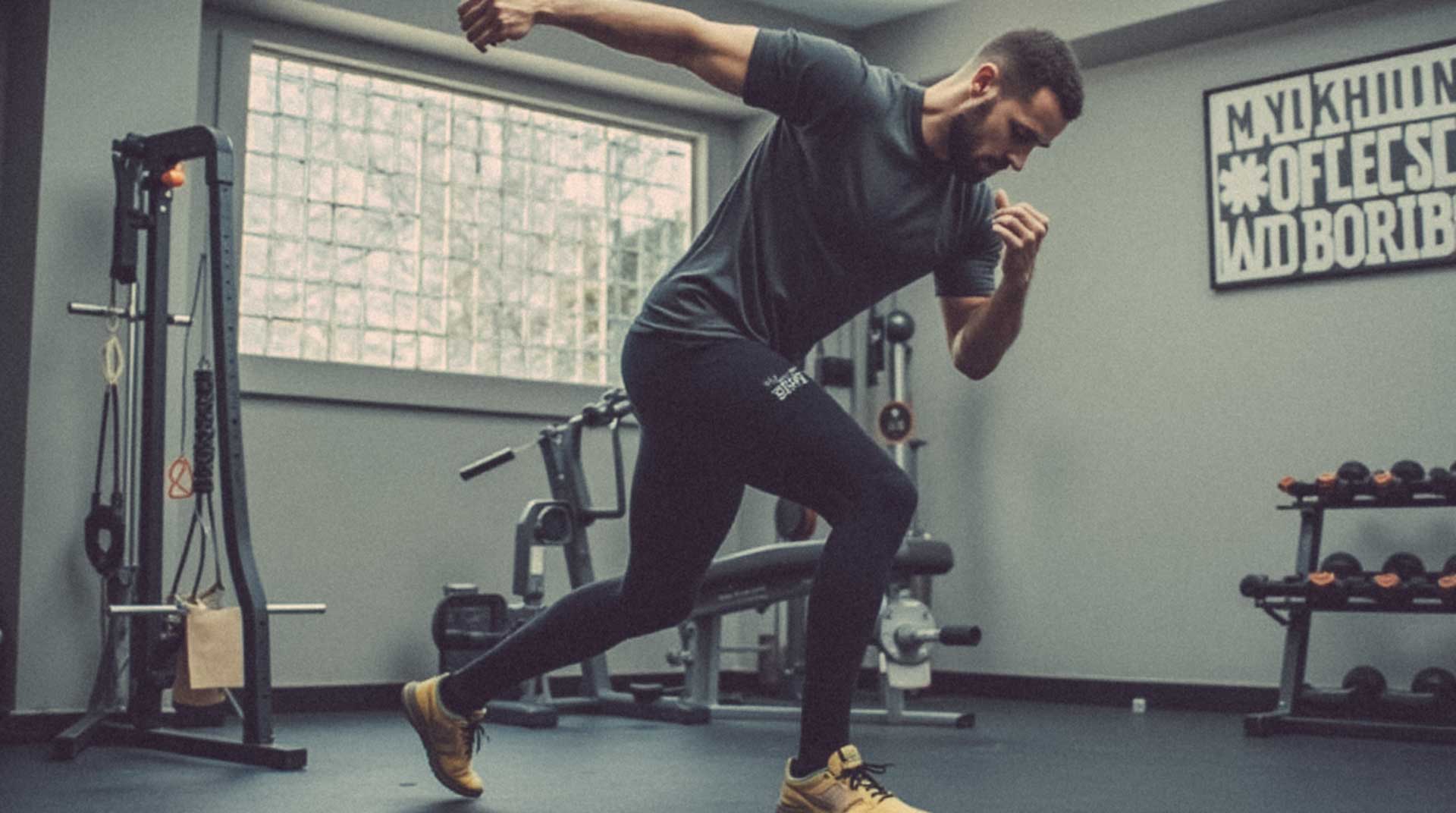How to Keep Your Fitness Goals After Ski Season

How to Stay in Shape After Ski Season Ends
When the snow melts and your ski boots come off, staying in shape can seem challenging. However, transitioning your workouts off the slopes is key to maintaining the endurance, strength, and flexibility built during ski season. HWY40 experts know that a strategic change in fitness routines keeps you ready for your next high-altitude adventure. This article explains how to adapt your training after skiing, maintain ski-specific strength, keep your endurance peaking, improve flexibility and mobility, optimize nutrition, and set off-season
—all in a fun, casual tone perfect for ski vacationers.
Key Takeaways
- Assess your fitness level and incorporate enjoyable cross-training activities.
- Maintain ski-specific strength with compound exercises, plyometrics, and bodyweight circuits.
- Boost endurance through regular cardio, interval training, and outdoor activities.
- Enhance flexibility and mobility with stretching, yoga, and foam rolling.
- Adjust your nutrition and set new fitness goals to stay motivated.
Transition Your Workouts for Off-Piste Fitness
Transitioning from skiing to off-piste fitness preserves your athletic edge. If you’re considering a refreshed approach to your equipment needs during this transition, you might look into HWY40 ski packages for a seamless gear update. Start by evaluating any changes in strength, endurance, or mobility after the season. This baseline helps create a balanced off-season workout plan. Consider adding activities like trail running, cycling, or swimming to complement your skiing background while building cardiovascular and muscular strength.
Assess Your Current Fitness Level Post-Skiing
After a season on the slopes, check your flexibility, core stability, and overall endurance. Simple tests like timed plank holds or step-ups can indicate your fitness level. Also, monitor any lingering pain in areas such as the knees or lower back, so you can tailor remedial exercises to address weaknesses.
Incorporate Cross-Training Activities You Enjoy
Mix up your routine with workouts that break the skiing pattern while challenging your body. Many enjoy trail running, mountain biking, or swimming during the off-season. These activities build cardiovascular fitness and engage different muscle groups, helping reduce the risk of overuse injuries and boredom.
Gradually Shift Focus From Ski-Specific Movements
Slowly replace ski-centric movements with more general exercises. For instance, swap heavy rotational ski moves for core exercises or replace quick downhill actions with steadier trail efforts. This phased transition helps redirect the strength and endurance you built on the slopes toward overall fitness.
Listen to Your Body and Allow for Active Recovery
After intense skiing, your body might need time to heal. Incorporate active recovery like light yoga, walking, or gentle stretching. Adjust the intensity of your workout based on how you feel to avoid overtraining and ensure quality recovery.
Find a New Spring or Summer Sport to Try
The off-season is ideal for trying activities like trail running, kayaking, or rock climbing. These sports stimulate different muscle groups and provide a refreshing break from ski training while keeping your routine fun and diverse.
Maintain Ski-Specific Strength All Year Round to Stay in Shape After Ski Season
Even without snow, preserving the strength you built during ski season is important for future performance. Focus on full-body strength and target muscles used in skiing by using compound exercises, plyometrics, resistance training, and bodyweight circuits.
Focus on Compound Exercises for Full-Body Strength
Exercises such as squats, deadlifts, and bench presses work multiple muscle groups at once, mirroring the total-body effort needed when skiing. Regular compound movements help build balanced muscle growth and stability, crucial for maintaining control on steep terrain.
Target Key Skiing Muscles Like Legs and Core
Skiing relies heavily on the quadriceps, hamstrings, glutes, and core. Incorporate leg presses, lunges, planks, and Russian twists into your workout to specifically strengthen these areas, reducing the risk of overuse injuries and ensuring you are ready for the slopes next season.
Implement Plyometrics for Explosive Power
Plyometric exercises, including box jumps and jump squats, enhance quick direction changes and overall agility. These exercises promote fast-twitch muscle activation and coordination, directly benefiting your skiing performance.
Utilize Resistance Bands for Versatile Training
Resistance bands are portable and effective for exercises such as lateral leg lifts and resisted squats. They provide consistent tension that simulates the resistance encountered on the slopes, supporting both strength and joint stability.
Consider Bodyweight Circuits for Convenient Workouts
Bodyweight circuits with push-ups, squats, lunges, and burpees offer a HIIT approach that boosts both cardiovascular fitness and muscular endurance. These workouts can be performed anywhere, making them a convenient option to stay in shape year-round.
Keep Your Endurance Peaking After the Snow Melts
Maintaining high endurance is crucial for long days on steep terrain. Regular cardiovascular exercise remains key during the off-season. This section explains how to use interval training, outdoor activities, and heart-rate monitoring to keep your stamina at its peak.
Engage in Regular Cardiovascular Exercise
Cardio workouts like running, cycling, and swimming are essential for building aerobic capacity. Regular sessions not only keep your heart healthy but also steadily improve your endurance, ensuring you build the stamina required for extended ski days.
Try Interval Training for Efficient Endurance Building
High-intensity interval training (HIIT) alternates bursts of effort with recovery periods, closely mimicking the varied exertion levels experienced while skiing. HIIT is an efficient method to boost overall stamina while burning calories effectively.
Explore Outdoor Activities Like Hiking or Cycling
Outdoor pursuits such as hiking and cycling are both physically challenging and mentally refreshing. These activities engage different muscle groups and adjust to varying terrains, offering a comprehensive endurance workout similar to the resistance found during skiing.
Build Stamina for Long Days Next Ski Season
Incorporate long-distance runs or extended cycling sessions into your routine to prepare for the prolonged physical demands of skiing. Gradually increasing the length of your sessions will help ensure your body can handle extended periods on the slopes.
Monitor Your Heart Rate for Optimal Training Zones
Using a heart rate monitor can help you stay in the optimal zone for aerobic exercise. This practice ensures that your training intensity is efficient and safe, allowing you to adjust your workouts based on measurable progress.
Improve Flexibility and Mobility for Future Ski Seasons and Overall Fitness
Enhancing flexibility and mobility is critical for injury prevention after a demanding ski season. Specific pre workout stretches are essential to keep your joints and muscles agile.
Dedicate Time to Stretching After Every Workout
Regular post-workout stretching (10–15 minutes) helps reduce muscle tension and improve joint mobility. This practice prevents stiffness and supports smoother transitions between workouts.
Practice Yoga or Pilates for Enhanced Mobility
Yoga and Pilates are excellent for developing core strength, balance, and flexibility. These practices enhance range of motion, improve posture, and also provide mental relaxation—important elements in maintaining overall well-being and reducing injury risks.
Use Foam Rolling for Myofascial Release
Foam rolling helps break down knots and improves blood flow to tight muscles. Spending around 10 minutes on foam rolling after workouts can ease muscle tightness and accelerate recovery, thereby enhancing performance for future ski sessions.
Address Any Lingering Tightness From Skiing
Target areas such as the calves, hamstrings, and lower back with specific mobility exercises and stretching routines. Easing residual tightness not only relieves discomfort but also builds a stronger foundation for future performance.
Work on Ankle and Hip Mobility for Better Skiing Form
Exercises that focus on ankle circles, hip openers, and dynamic stretches are vital for balance and controlled movements on uneven terrain. Enhancing this mobility contributes to better overall skiing form and a reduced risk of falls.
Adapt Your Nutrition to Support How You Stay in Shape After Ski Season
Proper nutrition is essential for energy replenishment and muscle repair after a vigorous ski season. Adjusting your diet to match off-season activity levels ensures you remain fueled and recover efficiently.
Adjust Caloric Intake Based on Changed Activity Levels
As your activity decreases compared to ski season, it’s important to reassess your daily calorie needs. Adjust portion sizes and track your intake to maintain an energy balance that supports recovery and training.
Prioritize Whole Foods and Lean Proteins for Muscle Repair
Focus on whole foods and lean proteins like chicken, fish, legumes, and tofu to repair muscle tissue. Include plenty of whole grains, fruits, and vegetables in your diet to supply essential vitamins and minerals that support overall metabolic health.
Stay Consistently Hydrated Throughout the Day
Hydration plays a key role in muscle repair and overall performance. Drinking water regularly helps with digestion and recovery, so keep a bottle handy and make hydration a routine part of your day.
Plan Meals to Maintain Energy for Off-Season Activities
A well-structured meal plan can prevent energy dips and ensure your metabolism supports both recovery and new physical challenges. Coordinate your meals around your activity levels to keep your energy consistent throughout the day.
Understand Your Energy Needs for New Fitness Pursuits
As you adapt to different workouts, your energy requirements may change. Tracking your intake with a food diary or app helps you understand and adjust your nutrition strategy to best support endurance, strength, or recovery training.
Set New Fitness Goals to Stay Motivated Off the Slopes
Setting new fitness goals after ski season can reinvigorate your off-season routine. Clear, measurable targets provide direction and motivation for continuous improvement.
Define Clear and Achievable Off-Season Fitness Targets
Setting specific goals—such as improving your plank hold, increasing running distance, or boosting squat weight—helps you stay focused and gives you milestones to celebrate as you progress.
Find a Workout Partner or Join a Fitness Community
Exercising with others boosts accountability and adds fun to your routine. Whether joining a class or a local group, community support can enhance motivation and provide useful tips for improvement.
Track Your Progress and Acknowledge Milestones
Keeping a fitness journal or using an app to log your workouts helps you monitor progress and adjust your routine as needed. Celebrating even small milestones can boost your motivation and commitment over the long term.
Plan Active Outings or Adventures to Maintain Enthusiasm
Incorporate outdoor adventures, such as hiking, mountain biking, or weekend kayaking trips, into your routine. These activities not only reinforce your gym efforts but also keep your fitness journey fresh and enjoyable.
Begin Early Preparations for Next Winter’s Skiing
Starting your training early in the off-season will help build strength, endurance, and flexibility gradually. A planned timeline for reintroducing ski-specific drills prepares you mentally and physically for when winter returns.
Table: Off-Season Fitness Elements and Their Benefits
Below is a table summarizing key off-season fitness strategies with corresponding benefits and targeted muscle groups:
| Strategy | Benefit | Target Muscles | Training Outcome |
|---|---|---|---|
| Compound Exercises | Builds full-body strength and core stability | Legs, core, upper body | Enhanced overall power |
| Interval and Endurance Training | Improves cardiovascular fitness | Heart, lung capacity | Increased stamina |
| Flexibility and Mobility Work (Yoga, Stretching, Foam Rolling) | Reduces injury risk and improves range of motion | Joints, muscles, connective tissue | Higher agility and reduced soreness |
| Nutritional Adjustments | Supports muscle recovery and sustained energy | Whole body (muscle repair) | Better recovery and consistent energy |
This table highlights a comprehensive approach to maintaining fitness levels, ensuring a strong foundation for both recovery and future training.
Frequently Asked Questions
Q: How often should I review my off-season training plan? A: Reassess your plan every 4–6 weeks to adjust for improvements and address any discomfort.
Q: What type of cardio is most effective during the off-season? A: High-intensity interval training (HIIT) combined with steady-state cardio like cycling or running provides balanced endurance improvement.
Q: How can I track my progress during off-season workouts? A: Use a fitness journal or digital app to log workouts, monitor heart rate, and record milestones.
Q: Do I still need to focus on ski-specific strength if I’m not skiing? A: Yes, maintaining ski-specific strength helps ensure readiness and reduces injury risk when transitioning back to skiing. For more information, check our ski packages.
Q: Can off-season training improve my performance on the slopes? A: Absolutely. Structured off-season training enhances endurance, strength, and mobility, leading to improved skiing performance and less fatigue.
Final Thoughts
Staying in shape after ski season requires a holistic approach that combines strength, endurance, flexibility, and smart nutrition. Transition your workouts, maintain ski-specific strength, and build cardiorespiratory endurance for an energetic off-season and a confident return to skiing. With clear goals, regular progress tracking, active recovery, and a balanced diet, you can keep your fitness journey exciting and be well-prepared for your next snowy adventure with HWY40 by your side.

